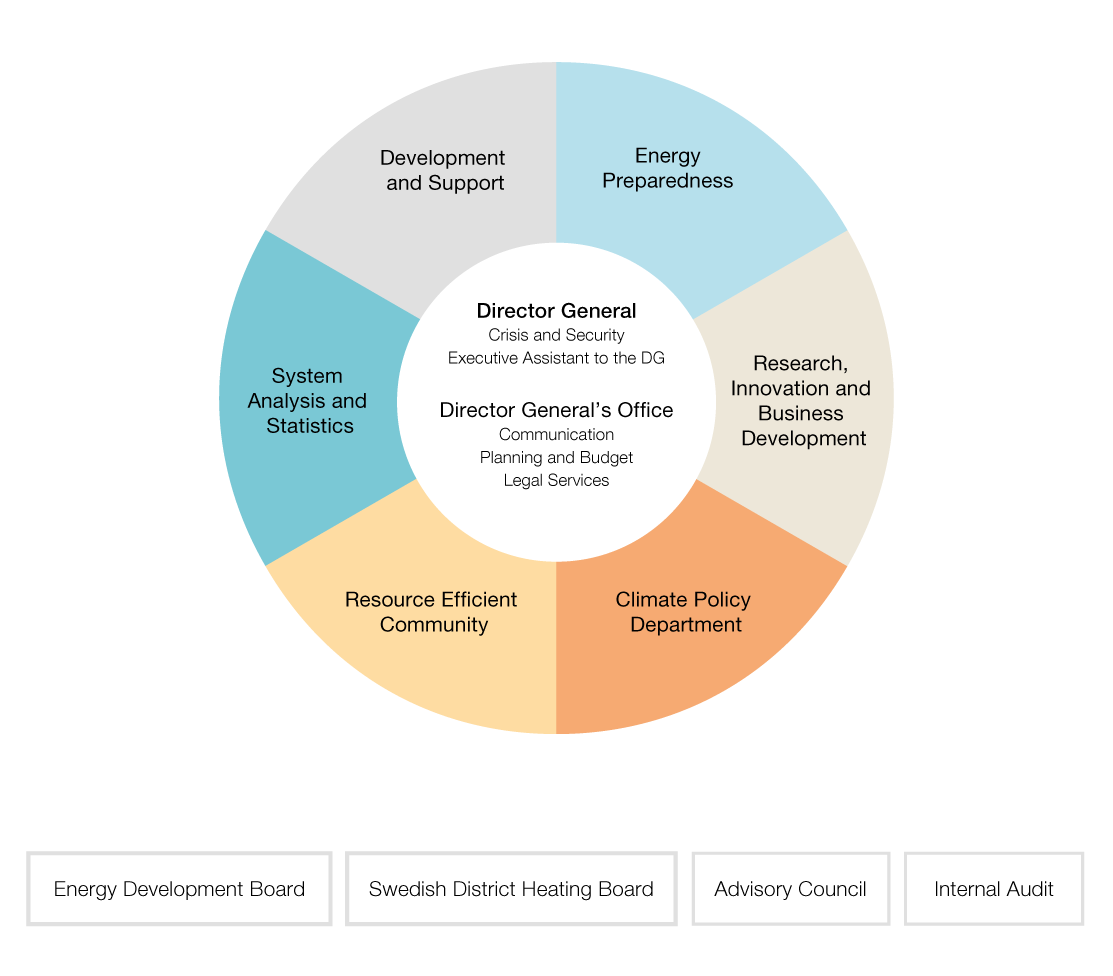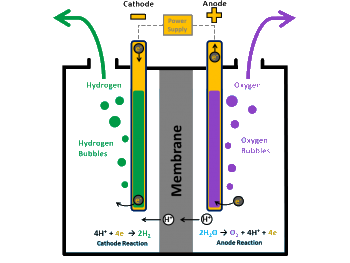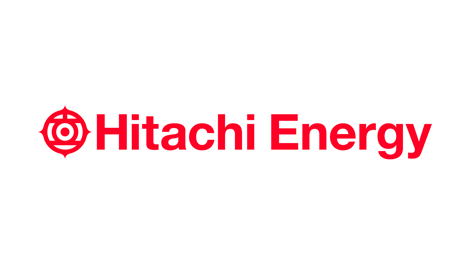Hitachi Energy – Hitachi Energy supplies electrical system for the world’s first green hydrogen plant for heating steel before rolling
A modular solution electrifies the electrolyzers and contributes towards a more sustainable steel industry.
Hitachi Energy has delivered a modular eHouse solution to Ovako, the leading European manufacturer of steel and one of the largest steel recyclers in the Nordic countries, to electrify the 20 megawatts (MW) electrolyzer in Hofors, Sweden. This is the world’s first plant to heat steel with hydrogen before rolling and in addition to steel heating, the hydrogen will be used to fuel cell-powered trucks, and the excess heat from the plant will be used for district heating.
This achievement is a result of a cross-border collaboration with Hitachi Energy, Ovako, Volvo Group, H2 Green Steel and Nel Hydrogen, which was announced in the summer of 2021. The initiative is also supported by the Swedish Energy Agency with the aim of establishing an industrial-wide use of green hydrogen, increasing the knowledge about the possibilities of the fuel and achieving cost-effective production.
Hitachi Energy has supplied a modular and factory-built Grid-to-Stack solution with main components such as transformers and rectifiers, related control equipment and high-current connections required to convert alternating current from the distribution grid to direct current used in the electrolyser.
“We are proud to collaborate with Ovako and be part of the journey to advance a sustainable steel industry. This project is a significant milestone and holds the potential to substantially reduce global emissions and the journey continues in Sweden and globally together,” said Johan Söderström, Head of Europe, the Middle East and Africa at Hitachi Energy.
“We are committed to continue pushing the boundaries of innovation offering leading-edge advisory services and technologies to accelerate the energy transition. Our solutions for the hydrogen sector support the generation of efficient and reliable clean energy.”
“The hydrogen plant strengthens Sweden’s position in sustainable innovations. There is an increasing demand for climate-neutral steel, in which we already hold a leading position, and there is significant interest in the industry for these types of new solutions,” says Marcus Hedblom, President and CEO of Ovako. “Now, we are showing the way forward for making high-grade industrial heat entirely fossil-free, not just for steel.”
Hitachi Energy is focused on developing innovative products, solutions, and services that support a clean energy transition for customers and partners, which includes ways of harnessing green hydrogen for a decarbonized future. Green hydrogen is a new and complementing component in the electrification space, where Hitachi Energy can add substantial value and innovation. With vast domain expertise in grid connection and power quality solutions, it develops groundbreaking technologies that enable renewables integration, high power quality and reliable and resilient power grids.
On September 5, 2023, Swedish Prime Minister Ulf Kristersson, together with Japanese Ambassador Noke Masaki, Ovako President, CEO Marcus Hedblom and key representatives from Hitachi Energy, Volvo Group, H2 Green Steel and Nel Hydrogen inaugurated the hydrogen plant in Hofors mill.
SourceHitachi Energy
EMR Analysis
More information on Hitachi Energy: See the full profile on EMR Executive Services
More information on Claudio Facchin (Chief Executive Officer, Hitachi Energy): See the full profile on EMR Executive Services
More information on Johan Söderström (Head of Europe, Middle East and Africa, Hitachi Energy): See the full profile on EMR Executive Services
More information on the Hydrogen Portfolio by Hitachi Energy: https://www.hitachienergy.com/markets/industries/hydrogen + Electricity will be the backbone of our sustainable energy future, with green hydrogen energy solutions complementing direct electrification to enable our net-zero society.
Green hydrogen will decarbonize both current and new hydrogen applications, especially in hard to abate sectors such as metals, fertilizers, chemicals, and oil and gas processes to lower their carbon footprint, whilst also electrifying remote construction sites and providing clean backup power where it is needed.
More information on Ovako: https://www.ovako.com/ + Ovako is a leading European manufacturer of engineering steel for customers in the bearing, transportation and manufacturing industries. We have sales offices in strategic locations around the world in Europe, North America and Asia, where we offer ware house products tailored to each customer’s specific needs in terms of location and delivery date. In some locations, customers can also be assisted with cutting and product adaptation. Each sales office is available in our contact list.
Since March 2019, Ovako is a subsidiary of Sanyo Special Steel and a member of Nippon Steel Corporation group, the third-largest steel producer in the world with more than 100,000 employees in more than 15 countries globally, and a revenue of approximately EUR 50 billion.
More information on Marcus Hedblom (President & Chief Executive Officer, Ovako): https://www.ovako.com/en/about-ovako/management/ + https://www.linkedin.com/in/marcus-hedblom-b892141/
More information on Volvo: https://www.volvogroup.com/en/ + 105,000 employees. 13 brands. 190 markets. Production facilities in 18 countries. Trucks, buses, construction equipment and marine and industrial engines. Complete solutions for financing and service. This is who we are.
Founded in 1927, the Volvo Group is committed to shaping the future landscape of sustainable transport and infrastructure solutions.
Every day our customers use our products and services to transport, deliver, build, and ferry goods, objects and people around the world. Our products and services help to put food on our tables, carry people to work or school, build roads, keep our cities clean and much, much more, effectively helping to to meet the growing demands of our world.
The Volvo Group drives prosperity through transport and infrastructure solutions, offering trucks, buses, construction equipment, power solutions for marine and industrial applications, financing and services that increase our customers’ uptime and productivity.
The Volvo Group sells its products under the Volvo, Volvo Penta, Rokbak, Renault Trucks, Prevost, Nova Bus, Mack and Arquus brands. We also partner in alliances and joint ventures in SDLG, Milence, Eicher, Dongfeng and cellcentric.
Volvo Group is headquartered in Gothenburg, Sweden, employs around 105,000 people and serves customers in almost 190 markets. In 2022, net sales amounted to SEK 473 billion (EUR 44.5 billion). Volvo shares are listed on Nasdaq Stockholm.
More information on Martin Lundstedt (President and Chief Executive Officer, Volvo): https://www.volvogroup.com/en/investors/corporate-governance/ceo-and-group-executive-board/martin-lundstedt.html + https://www.linkedin.com/in/martin-lundstedt-b378a492/
More information on H2 Green Steel (H2GS AB): https://www.h2greensteel.com/ + Founded in 2020 with the ambition to accelerate the decarbonization of the steel industry, using green hydrogen. At our fully integrated, digitalized, and circular plant in Boden, northern Sweden, H2 Green Steel will produce green steel, reducing CO₂ emissions with up to 95 percent compared to traditional steelmaking. By replacing coal with green hydrogen powered by fossil-free electricity, water and heat become our primary emissions. And steel is only the beginning – our expertise in green hydrogen will enable us to decarbonize other heavy industries.
H2 Green Steel’s commitment to a cleaner and healthier planet does not stop at having a production process that minimizes negative environmental impact, pollution, and waste. It is reflected in our environmental, economic, and social goals and policies, spanning everything from our business model and supply chains to our impact on the communities in which we are present.
The founder and largest shareholder of H2 Green Steel is Vargas, which is also co-founder and one of the larger shareholders in Swedish battery maker Northvolt. H2 Green Steel is headquartered in Stockholm, Sweden, with its first green steel plant under development in Boden, northern Sweden.
More information on Henrik Henriksson (Chief Executive Officer, H2 Green Steel): https://www.linkedin.com/in/henrik-henriksson-b4893112a/
More information on Nel: https://nelhydrogen.com/ + Nel Hydrogen is the first dedicated hydrogen company on the Oslo Stock Exchange. We have our roots from the hydrogen activities of Norsk Hydro, dating back to 1927. Our main products are hydrogen production plants for industry and energy applications, hydrogen fueling stations for the transport sector, and power-to-gas/power-to-power solutions for the renewable industry.
More information on Håkon Volldal (Chief Executive Officer, Nel): https://nelhydrogen.com/press-release/nel-appoints-hakon-volldal-as-new-chief-executive-officer/ + https://www.linkedin.com/in/h%C3%A5kon-volldal-5864961/
More information on the Swedish Energy Agency: https://www.energimyndigheten.se/en/ + The Swedish Energy Agency is leading society’s transition to a sustainable energy system.
The Agency is working with the promotion of energy efficiency measures and investments in renewable energy technologies.
The Swedish Energy Agency is divided into seven departments, with several units under each department.

More information on Robert Andrén (Director General, Swedish Energy Agency): https://www.energimyndigheten.se/en/about-us/our-organisation/ + https://www.linkedin.com/in/robert-andr%C3%A9n-841a04115/
More information on Ulf Kristersson (Prime Minister, Sweden): https://www.government.se/government-of-sweden/prime-ministers-office/ulf-kristersson/
EMR Additional Notes:
- What is Hydrogen? (Source: Hydrogeneurope.eu)
- The atom of hydrogen is the first element in the periodic table, with chemical symbol H and the first element created after the Big Bang. It is the most common substance in the universe and the richest energy source for stars like the sun. It consists of one proton (a core unit of positive charge) and one electron (negative charge).
- Hydrogen doesn’t exist naturally on Earth. Since it forms covalent compounds with most non-metallic elements, most of the hydrogen on Earth exists in molecular forms such as water or organic compounds. Combined with oxygen, it is water (H2O). Combined with carbon, it forms methane (CH4), coal, and petroleum. It is found in all growing things (biomass).
- Hydrogen (H2) is the most abundant element on earth but it rarely exists alone, therefore it is produced by extracting it from its compound.
- Hydrogen can be produced in numerous ways. Some methods produce CO2 while others are carbon free.
- H2 can be renewable or decarbonized if produced using renewable or carbon free electricity.
- Hydrogen has the highest energy content of any common fuel by weight.
- Hydrogen is a high efficiency, low polluting fuel that can be used for transportation, heating, and power generation in places where it is difficult to use electricity or as a CO2 neutral feedstock for chemical processes (ammonia-fertilizers).
- Grey, Blue or Green Hydrogen? (Source: International Energy Agency)
- There is a growing international consensus that clean hydrogen will play a key role in the world’s transition to a sustainable energy future. It is crucial to help reduce carbon emissions from industry and heavy transport, and also to provide long-term energy storage at scale.
- Researchers have found that clean hydrogen still costs too much to enable it to be widely deployed. Prices may not come down sufficiently until the 2030s, according to some estimates. But despite the uncertainty surrounding the future of clean hydrogen, there are promising signs that it could become more affordable sooner than expected.
- Where the hydrogen comes from is important. At the moment, it’s mainly produced industrially from natural gas, which generates significant carbon emissions. That type is known as “grey” hydrogen.
- A cleaner version is “blue” hydrogen, for which the carbon emissions are captured and stored, or reused.
- The cleanest one of all is “green” hydrogen (GH2), which is generated by renewable energy sources without producing carbon emissions in the first place.

- What is an hydrogen Electrolyzer?:
- An electrolyzer is a system that uses electricity to break water into hydrogen and oxygen in a process called electrolysis. Through electrolysis, the electrolyzer system creates hydrogen gas.
- Steam at the cathode combines with electrons from the external circuit to form hydrogen gas and negatively charged oxygen ions. The oxygen ions pass through the solid ceramic membrane and react at the anode to form oxygen gas and generate electrons for the external circuit.

- Carbon Dioxide (CO2):
- Primary greenhouse gas emitted through human activities. Carbon dioxide enters the atmosphere through burning fossil fuels (coal, natural gas, and oil), solid waste, trees and other biological materials, and also as a result of certain chemical reactions (e.g., manufacture of cement). Carbon dioxide is removed from the atmosphere (or “sequestered”) when it is absorbed by plants as part of the biological carbon cycle.
- Decarbonization:
- Reduction of carbon dioxide emissions through the use of low carbon power sources, achieving a lower output of greenhouse gasses into the atmosphere.
- Grid, Microgrids and DERs:
- The power grid is a network for delivering electricity to consumers. The power grid includes generator stations, transmission lines and towers, and individual consumer distribution lines.
- The grid constantly balances the supply and demand for the energy that powers everything from industry to household appliances.
- Electric grids perform three major functions: power generation, transmission, and distribution.
- A microgrid is a small-scale power grid that can operate independently or collaboratively with other small power grids. The practice of using microgrids is known as distributed, dispersed, decentralized, district or embedded energy production.
- Smart Grid is any electrical grid + IT at all levels . Micro Grid is a group of interconnected loads and DERs (Distributed energy resources) within a clearly defined electrical and geographical boundaries witch acts as a single controllable entity with respect to the main grid.
- Distributed energy resources (DERs) are small-scale electricity supply (typically in the range of 3 kW to 50 MW) or demand resources that are interconnected to the electric grid. They are power generation resources and are usually located close to load centers, and can be used individually or in aggregate to provide value to the grid.
- Common examples of DERs include rooftop solar PV units, natural gas turbines, microturbines, wind turbines, biomass generators, fuel cells, tri-generation units, battery storage, electric vehicles (EV) and EV chargers, and demand response applications.
- Distributed energy resources management systems (DERMS) are platforms which helps mostly distribution system operators (DSO) manage their grids that are mainly based on distributed energy resources (DER).
- DERMS are used by utilities and other energy companies to aggregate a large energy load for participation in the demand response market. DERMS can be defined in many ways, depending on the use case and underlying energy asset.


